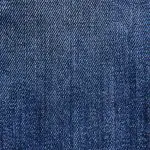Is it possible that the fabrics in your home could be contributing to harmful indoor air quality? Many people overlook the importance of non-toxic flame retardant fabrics, assuming all materials are safe. However, choosing the right fabrics can greatly impact your family’s health and safety. Understanding these options might lead you to a healthier home environment, but which materials should you consider for the best results?
Table of Contents
Key Takeaways
- Look for eco-friendly cotton fabrics treated with non-toxic flame retardants for breathable and soft bedding and upholstery options.
- Consider sustainable organic fibers like hemp and linen, which are durable and free from harmful pesticides.
- Opt for wool, which naturally resists flames without the need for chemical treatments, ensuring safety and comfort.
- Recycled polyester is a viable sustainable choice, offering a balance of quality and safety in home decor.
- Always check for safety certifications like NFPA or OEKO-TEX to ensure compliance with flame resistance standards.
Understanding Non-Toxic Flame Retardants
When you think about flame retardants, you might assume they’re all harmful, but that’s not necessarily true. Some non-toxic flame retardants are designed to offer safety without compromising your health.
These substances are often derived from natural sources or synthesized to be less harmful. By understanding the types available, you can make informed choices for your home.
Look for certifications or labels that indicate the absence of harmful chemicals like brominated or chlorinated compounds. Additionally, non-toxic alternatives can provide effective protection against flames, giving you peace of mind without the worry of toxic exposure.
Benefits of Eco-Friendly Fabrics
Choosing eco-friendly fabrics not only promotes a healthier living environment, but it also supports sustainable material choices.
By opting for these materials, you reduce exposure to harmful chemicals while making a positive impact on the planet.
You’ll feel good knowing your choices contribute to a safer, more sustainable future.
Healthier Living Environment
As you seek to create a healthier living environment, opting for eco-friendly fabrics can make a significant difference. These materials reduce exposure to harmful chemicals often found in conventional fabrics, promoting better indoor air quality. By choosing non-toxic options, you not only safeguard your health but also contribute to a sustainable future.
Here’s a quick comparison of eco-friendly fabrics:
| Fabric Type | Benefits | Common Uses |
|---|---|---|
| Organic Cotton | Soft, breathable, non-toxic | Bedding, clothing |
| Linen | Naturally pest-resistant | Curtains, upholstery |
| Hemp | Durable, biodegradable | Rugs, wall coverings |
Embracing these fabrics means investing in your well-being and fostering a safer, more inviting home.
Sustainable Material Choices
Opting for eco-friendly fabrics not only enhances your living environment but also supports sustainable material choices.
When you choose fabrics made from organic cotton, hemp, or bamboo, you’re investing in materials that are grown without harmful pesticides and chemicals. These materials not only reduce your carbon footprint but also promote biodiversity by supporting healthier ecosystems.
Sustainable fabrics often require less water and energy during production, further minimizing environmental impact.
Plus, they tend to be more durable, meaning you won’t have to replace them as often, saving both money and resources in the long run.
By selecting non-toxic, eco-friendly fabrics, you’re making a conscious decision that benefits not just your home, but the planet as a whole.
Your choices truly matter!
Top Non-Toxic Flame Retardant Fabrics
When choosing non-toxic flame retardant fabrics, you’ll want to contemplate eco-friendly cotton options and sustainable organic fibers.
These materials not only protect against fire but also promote a healthier environment.
Let’s explore some of the best choices available.
Eco-Friendly Cotton Options
Eco-friendly cotton options are gaining popularity as non-toxic flame retardant fabrics, offering a safe alternative without compromising comfort or style.
These fabrics are made from natural cotton fibers treated with non-toxic flame retardant solutions, ensuring they meet safety standards while remaining gentle on your skin.
You’ll appreciate how breathable and soft these cotton options feel, making them perfect for bedding, upholstery, and curtains.
Plus, they come in various colors and patterns, so you can easily find something that fits your decor.
When you choose eco-friendly cotton, you’re not only prioritizing your health but also supporting sustainable practices.
Sustainable Organic Fibers
As you explore non-toxic flame retardant options, sustainable organic fibers stand out for their safety and environmental benefits.
These materials, like organic cotton, hemp, and linen, are grown without harmful pesticides or synthetic fertilizers, making them a healthier choice for your home.
They’re naturally breathable, reducing the risk of mold and allergens.
Additionally, many organic fibers are treated with non-toxic flame retardants, ensuring they meet safety standards without compromising your well-being.
Applications in Home Decor
In today’s homes, incorporating non-toxic flame retardant fabrics can enhance both safety and style. You can use these fabrics in various applications, from curtains to upholstery, ensuring your living spaces remain inviting while prioritizing health.
Consider draping your windows with soft, flame-retardant drapes that filter light and provide a cozy atmosphere. Upholstering your furniture in these fabrics not only adds elegance but also peace of mind, knowing you’ve made a safer choice.
Additionally, throw pillows and decorative accents made from non-toxic materials can tie your decor together beautifully. By choosing these fabrics, you’re creating a space that’s not only aesthetically pleasing but also promotes a healthier environment for you and your loved ones.
Safety Standards and Regulations
While you might be drawn to the aesthetic appeal of non-toxic flame retardant fabrics, understanding the safety standards and regulations governing these materials is crucial for making informed choices.
Here’s what you should know:
- Flame Resistance Testing: Fabrics must pass rigorous tests to ascertain they meet specific flame resistance criteria.
- Certifications: Look for certifications like NFPA (National Fire Protection Association) or OEKO-TEX, which indicate adherence to safety standards.
- Labeling Requirements: Manufacturers must clearly label their fabrics, detailing flame retardant properties and compliance with regulations.
- Consumer Safety Guidelines: Stay updated on guidelines from organizations like the Consumer Product Safety Commission to confirm you’re choosing safe options.
Health and Environmental Impacts
Understanding the health and environmental impacts of non-toxic flame retardant fabrics is essential for anyone looking to make responsible choices.
Many conventional flame retardants can release harmful chemicals into your home, affecting indoor air quality and posing health risks. By opting for non-toxic alternatives, you’re reducing exposure to these hazardous substances, which can contribute to respiratory issues and other health problems.
Conventional flame retardants can harm indoor air quality; choosing non-toxic options reduces health risks for your family.
Additionally, non-toxic fabrics are often made from sustainable materials, minimizing their environmental footprint. This means you’re not only protecting your family’s health but also supporting eco-friendly practices.
Choosing non-toxic flame retardants helps create a safer living space for you and your loved ones while promoting a healthier planet for future generations.
Choosing the Right Fabrics for Your Home
When selecting fabrics for your home, it’s vital to contemplate not just aesthetics but also safety and environmental impact.
You want to create a safe space for you and your loved ones, so consider these four factors:
- Material: Opt for natural fibers like organic cotton, linen, or hemp, which are safer and more sustainable.
- Certification: Look for certifications such as Oeko-Tex or GOTS to guarantee the fabric is free from harmful chemicals.
- Durability: Choose fabrics that can withstand wear and tear, reducing the need for replacements.
- Care Instructions: Select fabrics that are easy to clean, as maintaining hygiene is imperative for a healthy home.
Frequently Asked Questions
How Do Non-Toxic Flame Retardants Compare to Traditional Options?
Non-toxic flame retardants often offer safer alternatives to traditional options, minimizing harmful chemical exposure. You’ll find they effectively reduce fire risks while promoting healthier indoor environments, making them a smart choice for your home.
Are There Specific Brands Known for Non-Toxic Flame Retardant Fabrics?
Yes, several brands focus on non-toxic flame retardant fabrics. Look into companies like Naturepedic, Cozy Earth, or Oeko-Tex certified fabrics. They prioritize safety while maintaining quality, so you can make healthier choices for your home.
Can I Wash Non-Toxic Flame Retardant Fabrics Without Losing Their Properties?
Yes, you can wash non-toxic flame retardant fabrics, but it’s crucial to follow the manufacturer’s care instructions. Avoid harsh detergents and high heat, as these can affect the fabric’s protective properties over time.
What Are the Costs Associated With Non-Toxic Flame Retardant Fabrics?
Imagine investing in a safety net, ensuring your peace of mind. Non-toxic flame retardant fabrics typically range from $15 to $50 per yard, depending on quality and brand, making them a valuable addition to your home.
How Long Do the Flame Retardant Properties Last in These Fabrics?
The flame retardant properties in these fabrics typically last several washes or years, depending on the material and care instructions. You should always check the manufacturer’s guidelines to guarantee peak performance and longevity.
- Is a Philippine Peso Bill Made From Abaca Fiber? the Facts Revealed - June 25, 2025
- Abaca Fiber Products: 10 Sustainable Swaps for Your Home - June 25, 2025
- Weaving With Abaca Fiber: a Beginner’s Guide to a Traditional Craft - June 25, 2025







